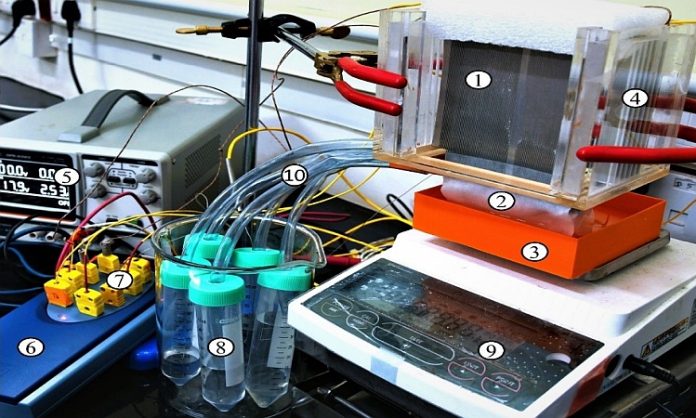Bengaluru: Researchers at the Indian Institute of Science (IISc), Bengaluru, have developed a novel thermal desalination system, which can provide clean and potable water using solar energy and consuming lesser electricity.
The most common methods presently used for desalination are membrane-based reverse osmosis and thermal desalination. However, both consume a lot of energy.
Also Read: IISc, CELLINK ink deal to set up excellence centre for 3D bio-printing
“Thermal desalination systems work by heating saltwater and then condensing the resulting vapour to obtain freshwater. But the energy required for evaporation is usually obtained from either electricity or combustion of fossil fuels. An environmentally friendly alternative is using solar stills in which solar energy is employed to evaporate saltwater in large reservoirs and the vapour that condenses on a transparent roof is collected. However, during condensation, a thin layer of water forms on the roof, reducing the amount of solar energy that can penetrate the reservoir and therefore the system’s efficiency,” IISc said.
“As an alternative to such solar stills, the IISc team has developed a novel design for a solar-powered desalination unit that is more energy-efficient, cost-effective and portable, making it convenient to set up in areas with limited access to continuous electricity,” explained Susmita Dash, assistant professor in the department of mechanical engineering and corresponding author of the study published in Desalination.
Also Read: IIT Madras develops indigenous mobile operating system-BharOS
The setup, designed by Dash and her PhD student Nabajit Deka, comprises a reservoir of saline water, an evaporator, and a condenser enclosed within an insulating chamber to avoid heat losses to the ambient air.
Apart from seawater, the system can also work with groundwater containing dissolved salts as well as brackish water. It can be adjusted to align with the shifting positions of the sun during the day.
Also Read: Union Sc & Tech Minister launches saline water based lantern
The researchers are currently working on scaling up the system and improving its durability, and increasing the volume of drinking water produced, so that it can be deployed for domestic and commercial use.
Picture details: 1. Texture evaporator 2. Insulating wicks 3. Reservoir 4. Acrylic chamber 5. DC power source 6. DAQ 7. Thermocouples 8. Distillate 9. Weighing balance 10. Distillate channels




